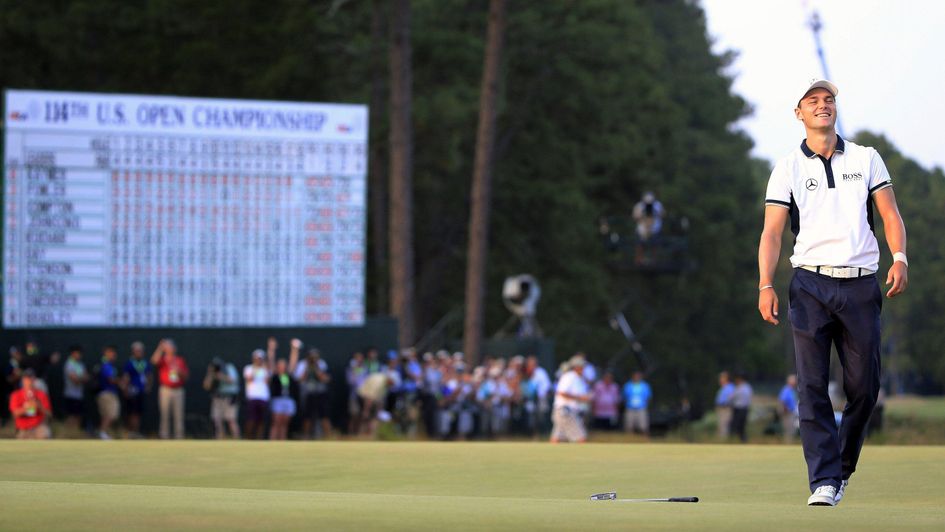Read our hole-by-hole guide to Pinehurst No.2, venue for the 124th US Open from June 13-16.
Pinehurst No. 2
- 7,550 yards, Par 70
1st, 398 yards, par four
Most players will not hit driver off the tee, opting instead to play just short of the point where the fairway narrows dramatically. That will leave a short iron to one of the course’s typical domed greens.
2nd, 500 yards, par four
A slight dog-leg which played the most difficult in relation to par in the 2005 US Open. Some relief comes in the shape of a widened driving zone, but the approach shot is to a very severe green.
3rd, 387 yards, par four
Most players will lay up short of the bunker that encroaches on the right. The green sits up in the air and a wayward approach will leave a difficult up and down, particularly from over the green.
4th, 528 yards, par four
Plays shorter than its yardage due to a downhill tee shot restored to the original angle intended by architect Donald Ross. A par five in both 1999 and 2005, the hole features a dog-leg left tee shot with the fairway sloping from left to right.
5th, 588 yards, par five
A good tee shot will offer the chance to go for the green in two, albeit from a sloping lie, while laying up leaves a tough approach with the ball likely to be significantly above a right-handed player’s feet.
6th, 228 yards, par three
The tee shot must carry a depression at the front that is four feet below the level of the green, as well as one of the deepest bunkers on the course at the front left. Any putts from the back of the green will be dangerously fast.
7th, 426 yards, par four
A severe dog-leg to the right means most players will not hit driver, with a left-to-right tee shot preferred to avoid running out of fairway. The green is protected by a deep bunker on the right.
8th, 492 yards, par four
The fairway initially slopes downhill and from left to right, and then uphill and from right to left. Missing the green long – where the fall-off can be eight or nine feet – will leave an especially difficult recovery.
9th, 184 yards, par three
The shortest of the par threes demands an accurate shot to a green with two distinct sections. A back-left hole location looks harder to access but is relatively flat, while the front-right section has much more slope.
10th, 617 yards, par five
A large mound on the right narrows the driving area and the fairway remains tight after this point. Trees protect the left side of the fairway for anyone going for the raised green in two.
11th, 478 yards, par four
A demanding tee shot is played to a semi-blind landing zone which slopes from left to right. Most players will face a mid-iron approach to a green protected on the left by bunkers and a steep run-off area.
12th, 486 yards, par four
Many players will hit driver to the generous landing area, but the second shot requires a precise approach to a green with a dramatic drop-off behind. The putting surface slopes from back to front.
13th, 381 yards, par four
In contrast to the previous hole, it is far better to be long rather than short of the green on the 13th. Anything left short on an uphill approach will leave a difficult recovery, but the length of the hole offers birdie chances.
14th, 472 yards, par four
The downhill tee shot favours a left-to-right shape to avoid a bunker on the left side. The safe approach is to the front half of the green, with the putting surface sloping severely from back to front.
15th, 197 yards, par three
One of the few greens renovated by Bill Coore and Ben Crenshaw ahead of the 2014 US Open, restoring the right side to its original size. However, it remains a small target with shots landing on the front portion likely to end up in a collection area.
16th, 536 yards, par four
The only hole which features a water hazard, although it is not in play for the professionals. A tee shot down the left of the fairway can get a welcome bounce forward, while the green has a pronounced slope from back to front.
17th, 207 yards, par three
Although a similar distance to the 15th, the green is much larger and easier to hit. The toughest hole location is behind the bunker on the right-hand side but it played the easiest par three in 2005.
18th, 448 yards, par four
The fairway looks wider from the tee than it actually is thanks to an S-shaped landing area that is slightly uphill and hidden from the player. A hollow on the right of the green creates a two-tier look and a back-right hole location can be expected for the final round.









